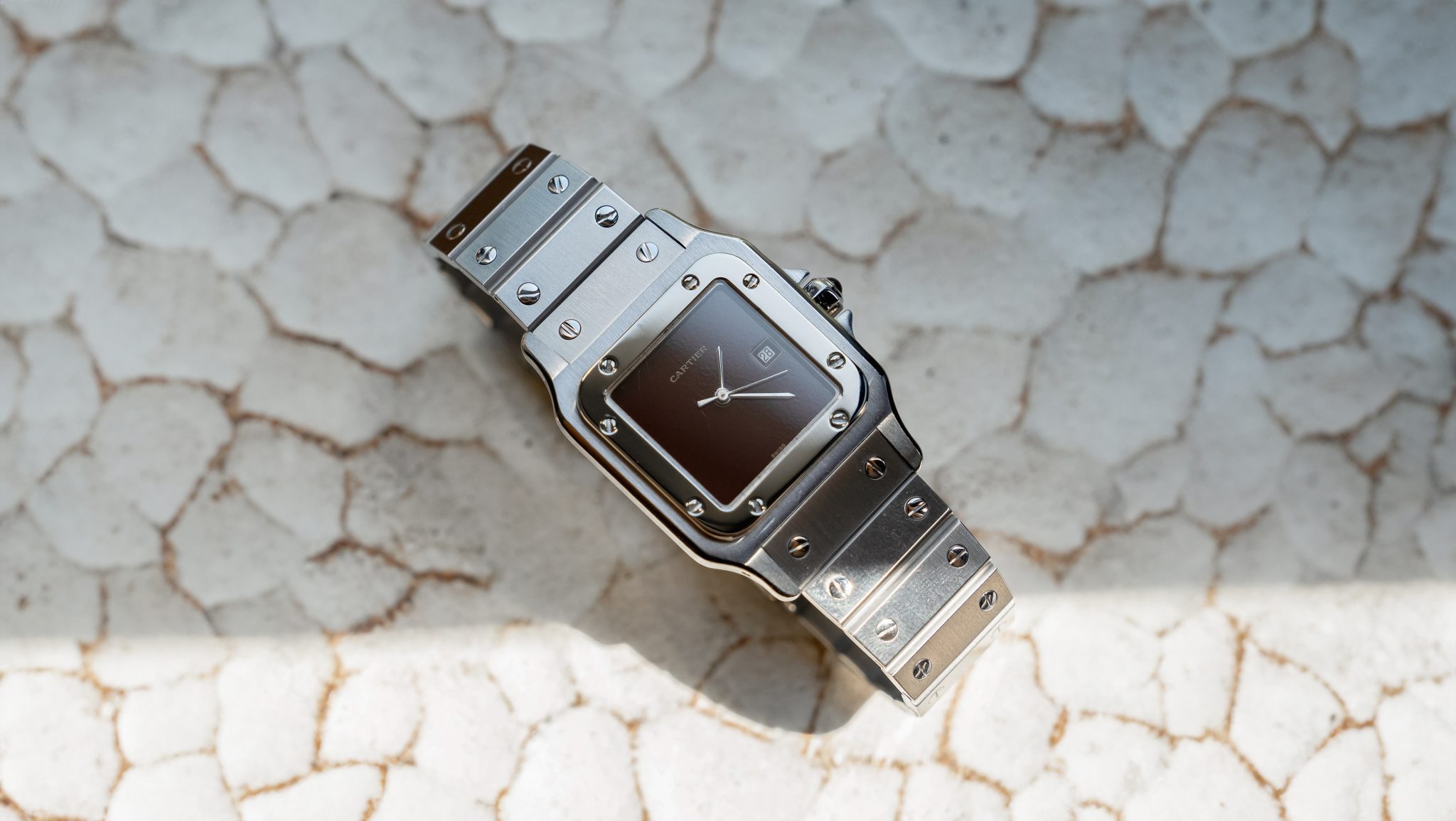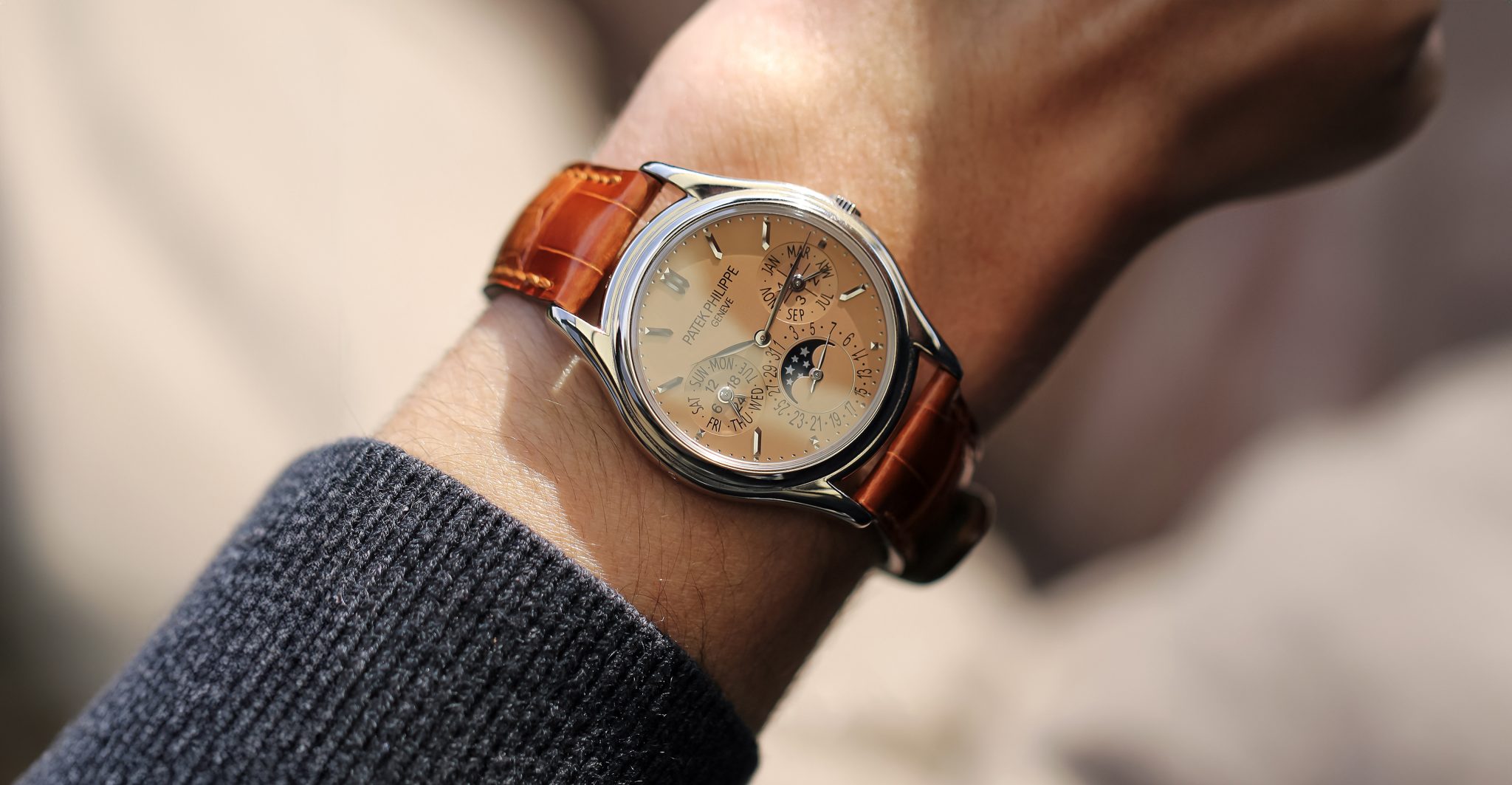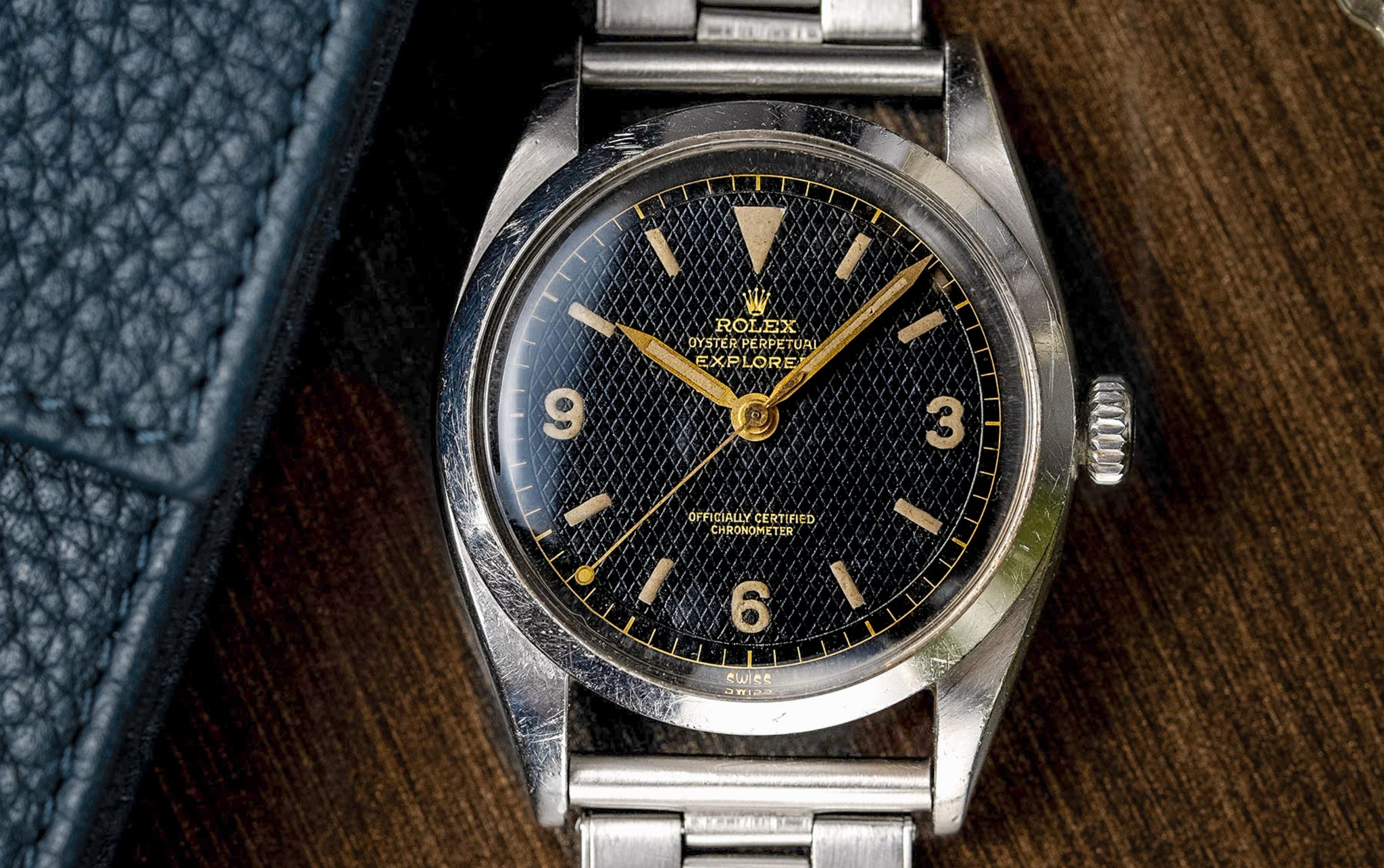
Honeycomb Dial 6350 Rolex Explorer
Many will argue this is the first-ever Explorer, ref. 6350. But others will state it’s the ref. 6150. In the 6150, only some examples actually said Explorer on the dial and it wasn’t yet an officially certified chronometer. By this 6350, both traditions were firmly in place. It’s kind of like arguing when the Beatles became the Beatles. Was it in ’56 when McCartney and Lennon paired? Or 1960 when the Beatles name was made? These are grey areas, but one thing is totally black and white. The 6350 has what I would suggest is the most attractive dial ever adorned with the word ‘Explorer’, save for the hotly debated Albinos. All for one simple reason: it’s a honeycomb, which makes it sexier to my eye than anything that came before or indeed after.
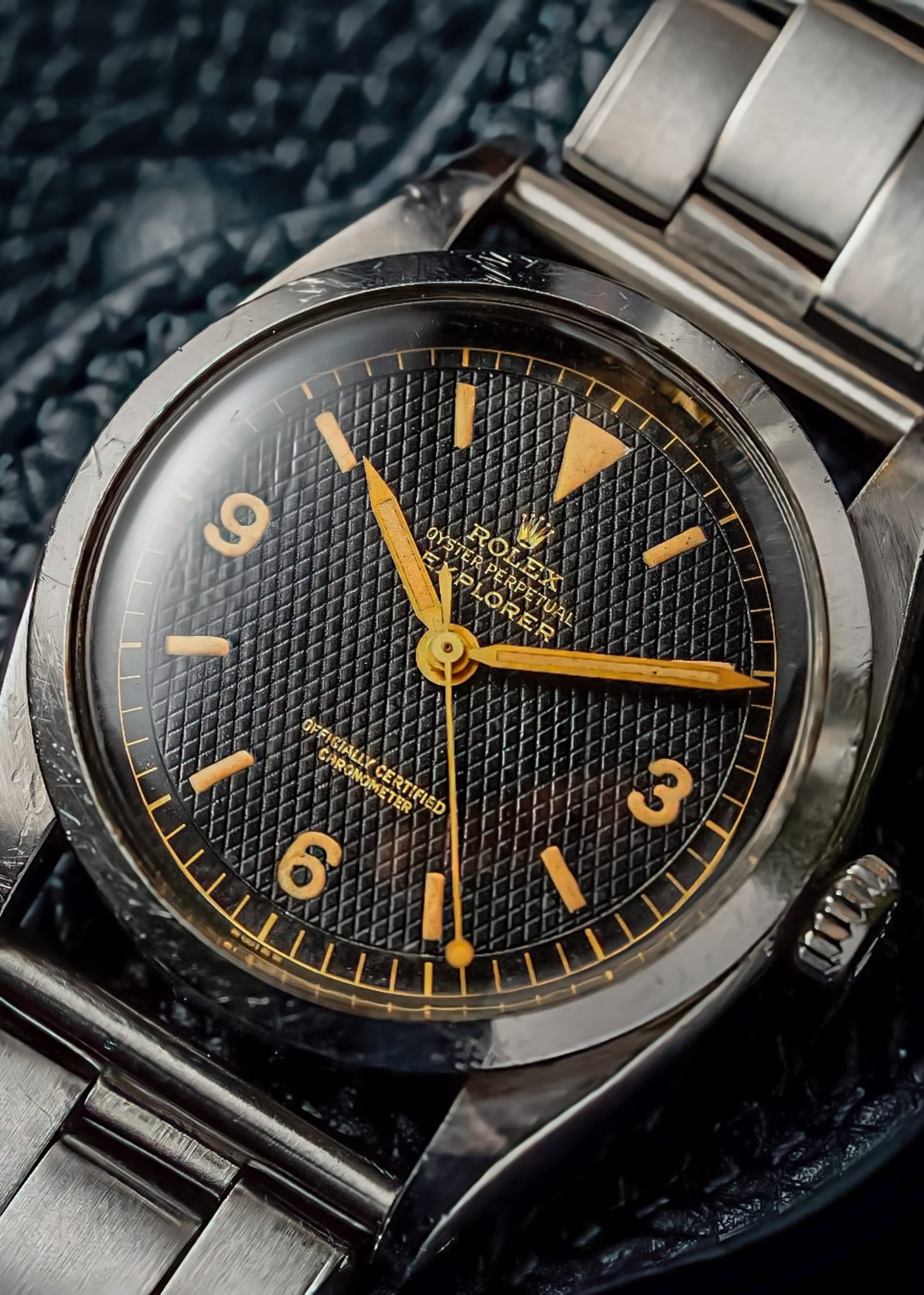
Honeycomb dials and their hexagonal texture mark a specific era of awesome from Rolex just after 1950 when the professional lines were nascent. These should really be viewed as the ‘exotic’ dial variants of what came after. They’re not nearly as collected as say a ‘true’ exotic Paul Newman Daytona is relative to a standard dial, but they have every right to command that kind of premium over the standard gloss dials. You’ll find honeycomb in the earliest Datejusts, Submariners, Milgauss, and Turn-O-Graphs. It’s a completely different look that signifies a very special and quite romantic point of Rolex history, these watches are the foundations of what made the brand great.
Honeycomb dial 6350s were often hammering around 40K USD in 2015. By 2020, it seemed like 75K was the least one would change hands for. Some of the more impressive examples exceeded 100K. Today, they’re much nearer 90K, with a large variance for condition as always. But what’s very interesting here is that the premium relative to a gloss dial is 20-40K (condition really matters). But an Oyster Paul Newman today is 300-400K where a non-PN Oyster Daytona is arguably 100-150K. That’s a 280% premium for a PN. In Explorer-land, a waffle dial will command closer to 200%. I’ll take that latter trade all day. Paul Newmans have demonstrated staying power in the market and zeitgeist, which they deserve to. But the way a honeycomb ties in more directly with the early years of professional Rolex resonates with me far more.
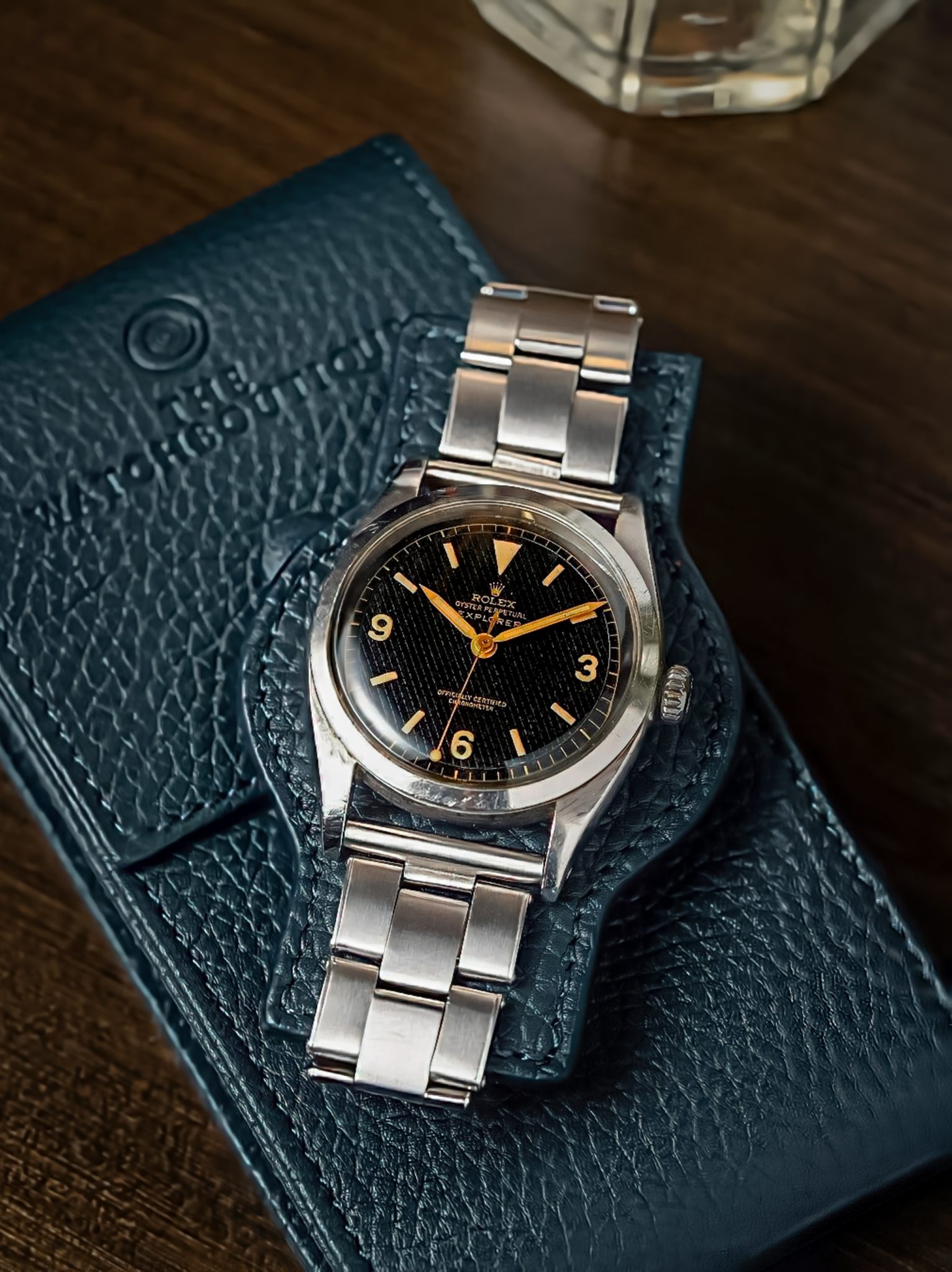
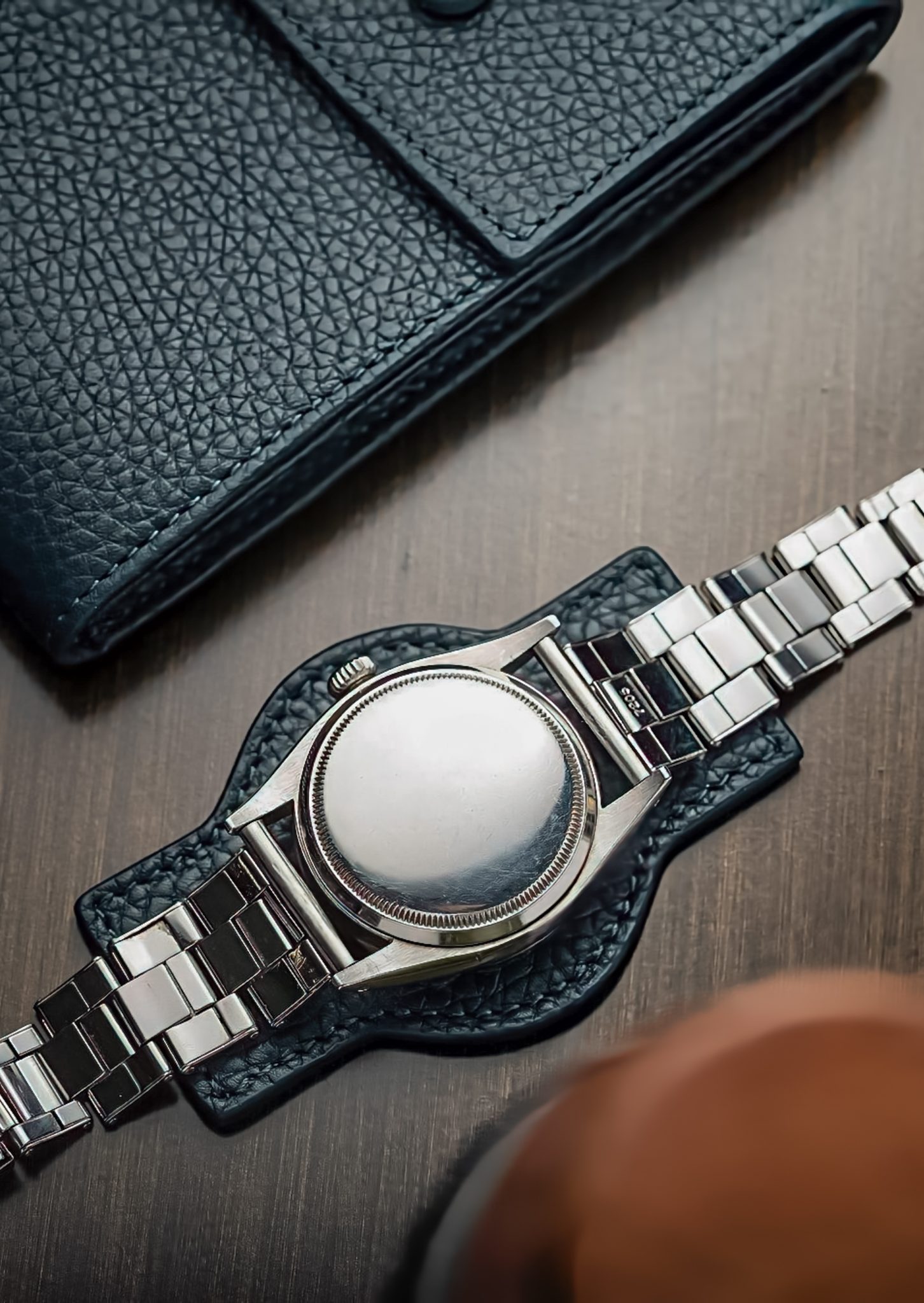
This example dates to ’53. It’s got a full case with moderate surface wear, but full lugs. Its dial shows no damage, with radium all full and even honey in tone. This one has pencil hands, which are correct (as can be Mercedes and even a syringe). It comes from a well-regarded Italian retailer. No idea if that rivet Oyster bracelet is original to the watch.








